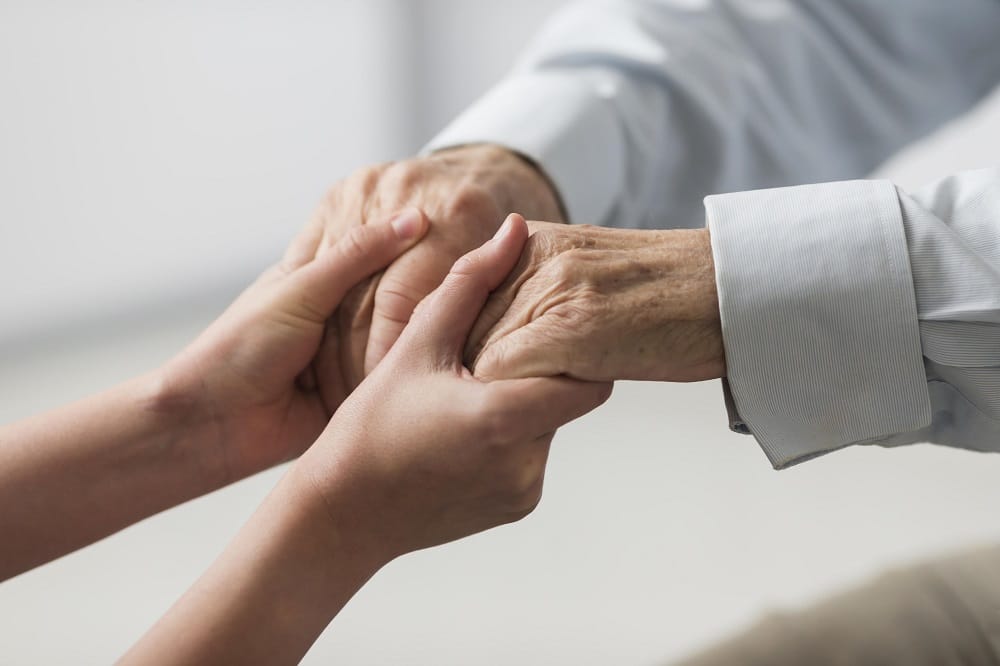At Rehabot , we’ll tell you what techniques are used in neurological stroke rehabilitation to help a person get back on their feet, regain balance, and gain confidence.
Why is it so difficult to stand up after a stroke?
A stroke damages part of the brain. This part may be responsible for movement control, muscle strength, or balance. Therefore, even if your legs are physically “fine,” your body no longer responds the same.
In addition, many people lose sensation in their affected side, which makes them fearful of falling. This leads to inactivity, and the longer this lasts, the weaker the muscles become.
Neurological stroke rehabilitation works precisely on this point: reconnecting the body with the brain , step by step.
When can you start working to get back on your feet?
In many cases, the sooner you start, the better . As long as your doctor approves, exercises can begin in bed or even in a chair, with the help of a physical therapist.
The first few days, the goal is not to get the patient to stand up alone, but rather to gain body awareness , improving muscle tone and activating postural reflexes.
Effective techniques for standing up after a stroke
Below, we explain real-life techniques used in clinics like Rehabot , which specialize in stroke neurological rehabilitation . All of these techniques are tailored to each individual’s level.
1. Weight transfer training
This is one of the most important exercises. It involves gradually teaching the body to bear weight on the affected leg . At first, it can be done while sitting, leaning the torso from side to side.
Later, you can do this standing up, with support from parallel bars or a therapist. This training improves balance and confidence, two key factors in avoiding falls.
2. Use of the mirror
The brain needs to “see” itself working. Using a mirror, the patient can observe their posture when trying to stand up, correcting asymmetries without the need for complex commands. This feature also activates areas of the brain responsible for motor control.
3. Neuromuscular facilitation
Here, the physical therapist applies certain stimuli (pressure, stretching, tactile contact) to specific muscles while the patient attempts to move. The goal is to “remind” the body how to move correctly .
This type of technique is adapted to each person, and is very common in early stages.
4. Assisted standing training
The patient sits on the edge of the bed or in a high chair. With assistance, they place their feet on the floor, lean their torso forward, and push off with their legs. Initially, the therapist may assist with a harness or support under the arms to guide movement and prevent falls.
Over time, this gesture becomes automated. The goal is for the person to be able to stand up without assistance.
5. Functional electrical stimulation (FES)
Small electrodes are placed on the muscles to stimulate them with electrical impulses while you attempt to perform the movement. This strengthens the connection between the brain and the body, helping you regain muscle strength.
This technique is painless and very useful when there is significant weakness.
The importance of environment and repetition
No technique will work without consistent training . The brain needs repetition to learn again. But it’s not just about doing exercises: emotional support, motivation, and patience are also key.
Furthermore, the location matters. An environment like that of our clinic in Malaga, with professionals specialized in neurological stroke rehabilitation , can make a huge difference. Because we don’t just work on the body: we also teach the brain to “start over.”
What can you do at home to complement your rehabilitation?
Although the more technical part should be done by professionals, there are small daily gestures that help:
- Encourage the person to change positions several times a day .
- Perform gentle arm and leg mobility exercises .
- Stimulate the affected side: touch it, move it, look at it.
- Celebrate every step forward, no matter how small.
A key tip that few patients know
Did you know that mentally visualizing movement also helps the brain recover it?
Although it may sound strange, imagining yourself standing up step by step , several times a day, activates the same brain areas as actually doing it. This mental exercise, guided by a therapist, enhances rehabilitation results.
With the right techniques, the necessary time, and the right professional support, many people who have suffered a stroke get back on their feet . It’s not easy, nor is it quick, but it is possible.
At Rehabot, our neurological stroke rehabilitation clinic in Malaga , we support each patient from their first movements until they regain their independence. If you have questions or would like to learn more about how we help, we’d love to hear from you.
Leave us your data to start your treatment







